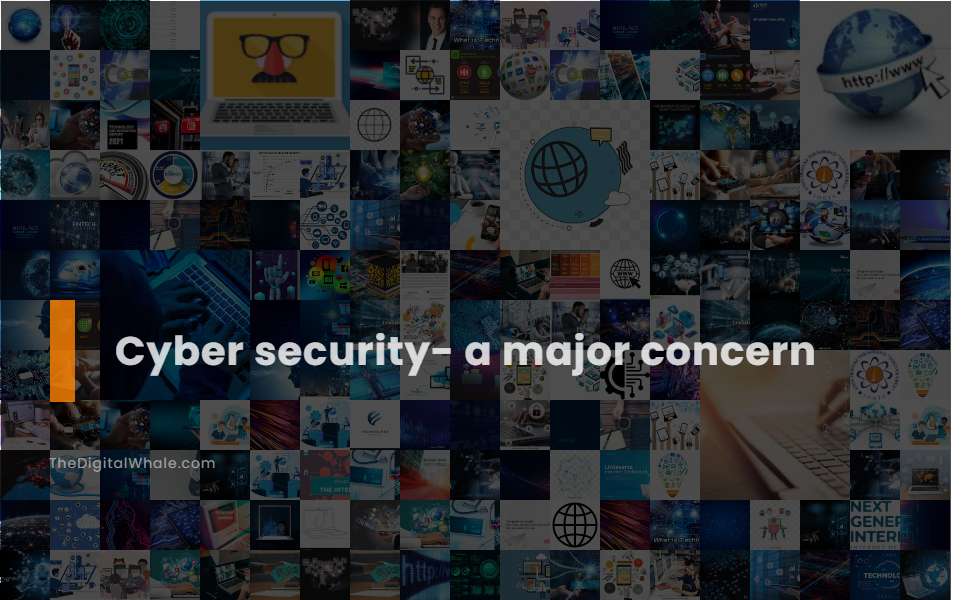Cyber Security- A Major Concern
What are the main challenges in cyber security? What is social engineering? Let's find out more about Cyber Security- A Major Concern.

Social Engineering: Exploits human interactions to gain unauthorized access.
Social engineering in cybersecurity involves tactics that manipulate, influence, or deceive victims into divulging sensitive information or performing actions that compromise security. These tactics often exploit human psychological vulnerabilities and trust through techniques like phishing, pretexting, and smishing. To learn more about these intricate methods, you can explore detailed resources on Proofpoint, which provides comprehensive insights into how such threats operate and ways to protect against them.
Ransomware: Malware that blocks access to software or files until a ransom is paid.
Ransomware is a type of malware that employs encryption to take control of a victim's information by encrypting critical data and demanding a ransom, often in cryptocurrency, to supply the decryption key and restore access to the files and systems. For more information on this significant threat, you can visit the detailed explanation available on Trellix, which provides an in-depth overview of ransomware and its impact.
State-Sponsored Attacks: Cyberattacks perpetrated by other nations against governments or organizations.
State-sponsored cyberattacks, often backed by national governments, are strategically aimed at stealing intellectual property, influencing public opinion, or disrupting critical infrastructure. These cyberattacks can involve significant financial backing, training, or sanctuary for the attackers. In an assessment of such operations, it becomes evident that nation-states are deploying increasingly sophisticated techniques. For more comprehensive insights into these threats, Cyber Defense Magazine provides an in-depth analysis on how these rogue nations profoundly impact global cybersecurity.â
Insider Threats: Threats arising from within an organization, either accidental or malicious.
Insider threats in Cyber Security are posed by individuals within an organization, such as current or former employees, contractors, and partners, who can intentionally or unintentionally misuse their access to compromise sensitive information. This highlights the need for proactive measures like managing user privileges, regular security awareness training, and continuous network and endpoint monitoring. To learn more about how to address these risks effectively, you can explore solutions for Insider Threats on the Redscan website.
Cloud Vulnerabilities: Misconfiguration, poor security setup, and mismanagement of cloud services.
Cloud vulnerabilities, particularly misconfiguration, poor security setup, and mismanagement of cloud services, are major concerns as they can lead to unauthorized access, data breaches, service disruptions, and other security incidents. These issues often arise from overly permissive access controls, weak passwords, and inadequate visibility over cloud infrastructure. For a comprehensive exploration of these challenges, visit the article on Top Cloud Security Issues, Threats, and Concerns on Check Point's website, which delves deeper into strategies for mitigating these risks.
Related:
What is the importance of information literacy in the workplace? What are some of the importance of information literacy? Let's find out more about The Importance of Information Literacy.
Artificial Intelligence Cyber Threats: Increasingly sophisticated attacks leveraging AI and machine learning.
Artificial Intelligence and Machine Learning are increasingly being used by cybercriminals to launch sophisticated attacks, including optimized cyber attacks, automated malware, AI-powered phishing, and data manipulation, which can evade traditional security measures and pose significant risks to cybersecurity. The evolving landscape of cyber threats highlights the need for robust protective measures to counter these advancements. For an in-depth understanding of these risks and the implications they hold, Malwarebytes provides comprehensive insights into cybersecurity basics and emerging threats.
Internet of Things (IoT) Attacks: Vulnerabilities in connected devices.
Vulnerabilities in IoT devices include weak authentication, lack of encryption, insecure ecosystems, denial-of-service (DoS) and distributed DoS (DDoS) attacks, device theft, firmware exploits, and ransomware, which can lead to data breaches, system disruptions, and significant security risks. IoT devices are susceptible to various cyber threats such as botnets, malware and spam attacks, advanced persistent threats (APTs), ransomware, and real-time recording. These threats can result in data exfiltration, system disruptions, and financial losses due to the exploitation of weak passwords, unsecured programs, and other vulnerabilities. As detailed in [Top IoT Port Risks](https://www.upguard.com/blog/iot-port-risk), understanding and addressing these issues is crucial to mitigating potential threats and ensuring the security of connected devices.
Phishing: Tricks users into divulging sensitive data.
Phishing is a cyberattack that uses email, phone, or text messages to trick users into providing sensitive information such as passwords, credit card numbers, and social security numbers by impersonating legitimate representatives. This deceptive practice can lead to potential identity theft or financial loss. To better understand how to protect yourself from these threats and the various forms they take, visit the detailed article, What Is Phishing, which explores the nuances of this ever-evolving danger in the digital world.
Cryptojacking: Malware that drains computing power to mine cryptocurrency.
Cryptojacking is a cybercrime where hackers hijack a victim's computing resources to mine cryptocurrency, often through phishing, malicious links, or infected websites. This malicious activity exploits the victim's CPU and GPU without their knowledge or consent, leading to significant issues such as slowed device performance, overheating, and increased electricity costs. For more detailed information, you can explore the term further on TechTarget, a comprehensive resource for understanding technical definitions and cybersecurity trends.
Supply Chain and Software Supply Chain Attacks: Compromising software or hardware before they reach consumers.
Supply chain attacks involve compromising third-party tools or services to infiltrate a target's system or network. Often, this is achieved by injecting malicious code into software updates or exploiting vulnerabilities in the supply chain, allowing attackers to gain access to multiple downstream targets. For more detailed information on how these attacks operate and how to protect against them, you can visit Cloudflare's Learning Center on Supply Chain Attacks. Understanding the complexities of these threats is crucial as they allow attackers to surreptitiously breach multiple entities through a single compromised link.
Related:
What is artificial intelligence and what does it mean for the future of humanity? How will artificial intelligence change the way librarians research? Let's find out more about The Rise of Ai and Its Implications.
